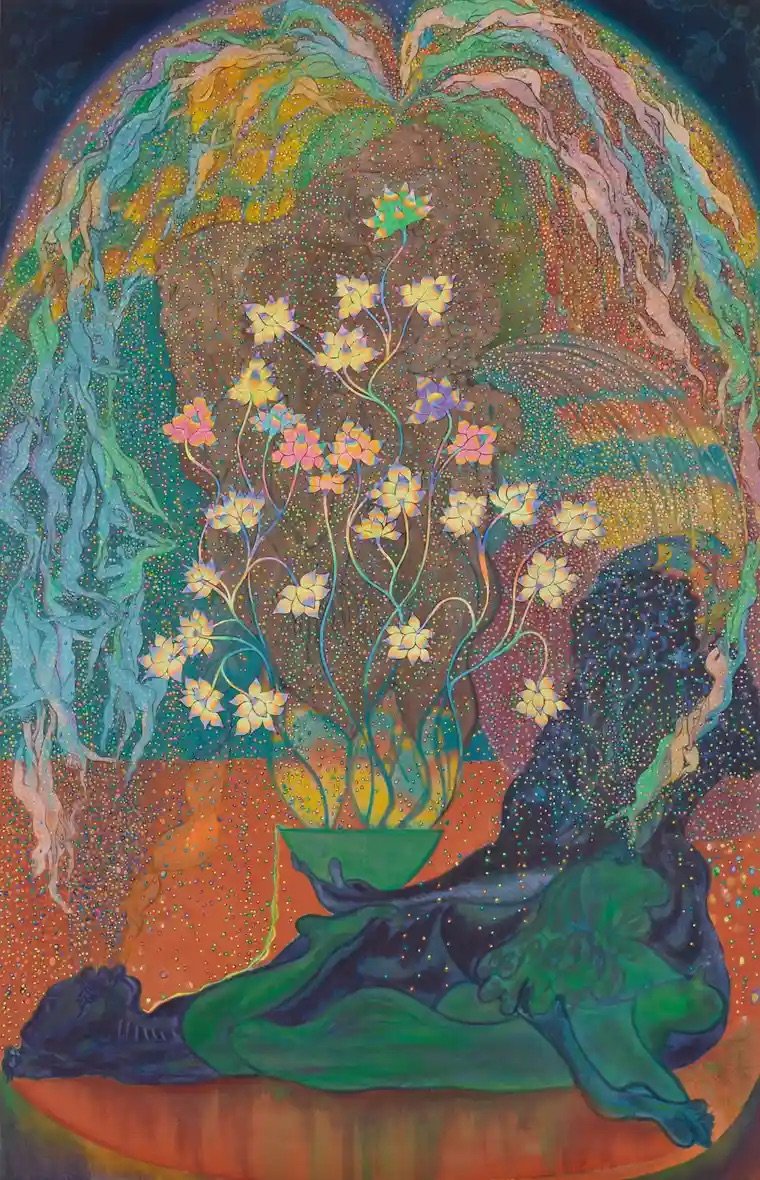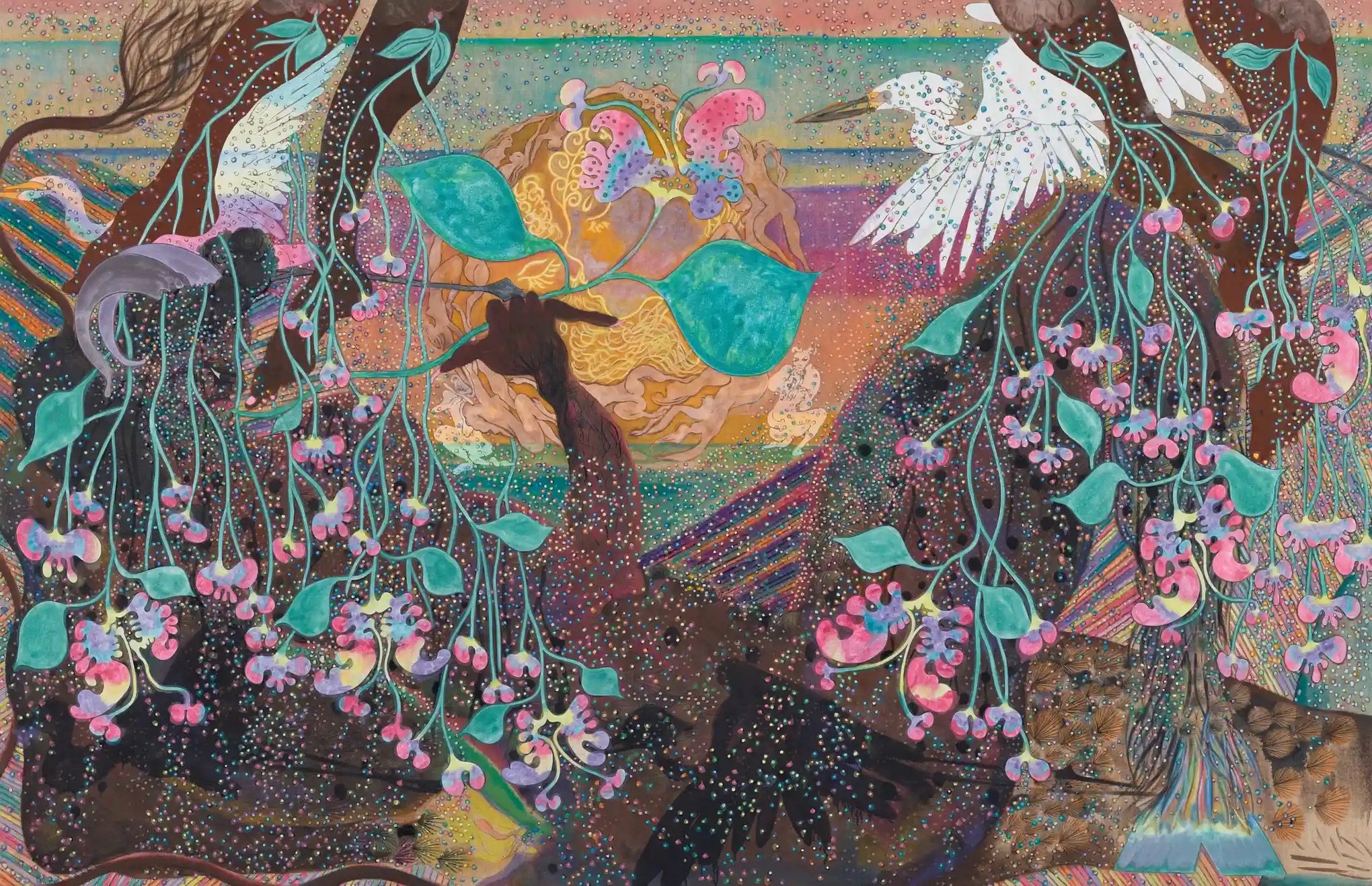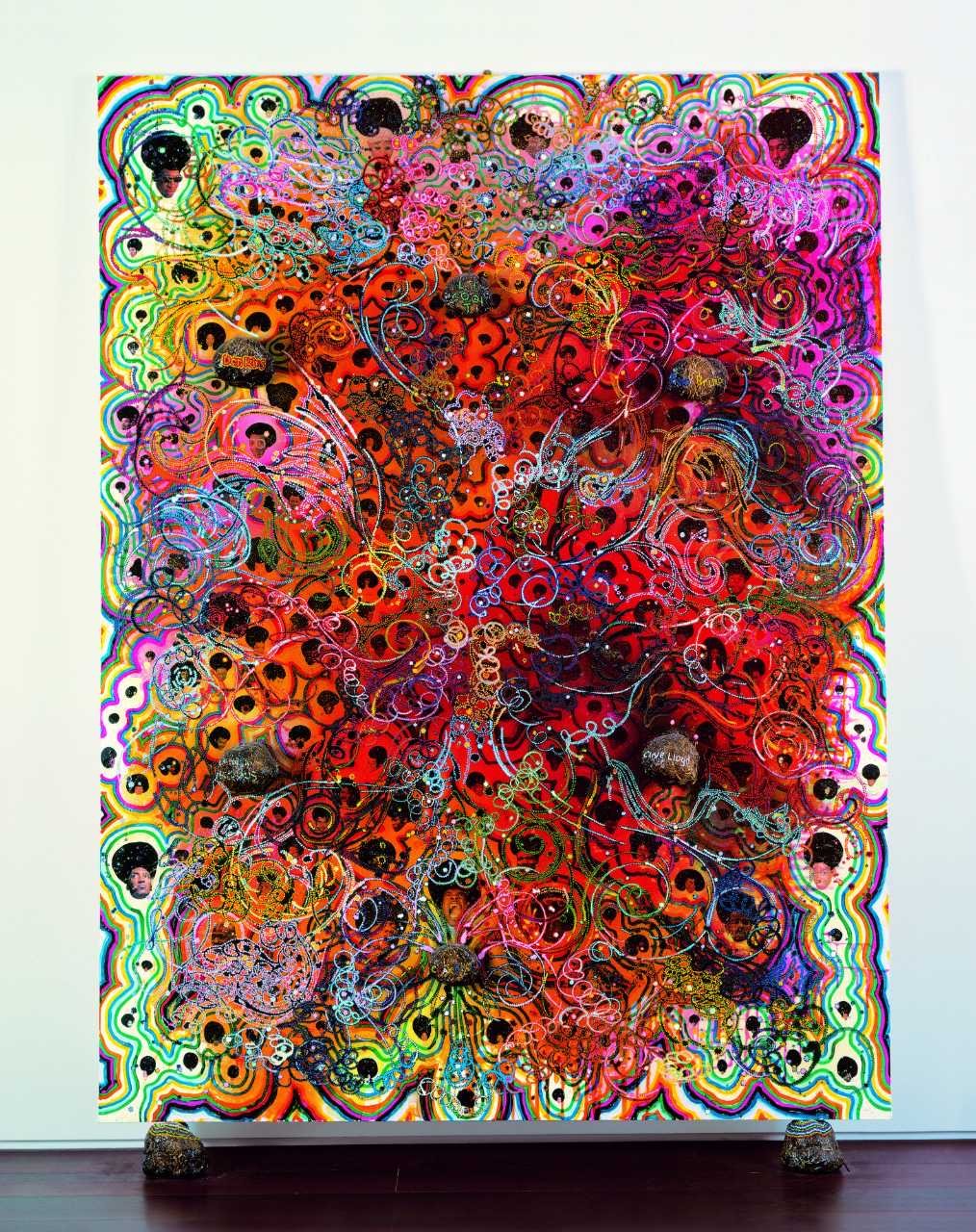Chris ofili
Chris Ofili is a contemporary artist who uses diasporic traditions and conceptual themes in art to convey identity, race, and politics.
In his artworks, Ofili has used beads, resin, glitter, oil paint, elephant dung lumps, and cutouts from pornographic magazines.
His work has been labeled “punk art.”
On the left: The Fountain, 2017–2023
Ofili was born in Manchester, England, in 1968 to Nigerian parents. Growing up Catholic and an altar boy, the bible and its teachings played a prominent role in his art.
Even though he had plans to become a carpenter, he discovered his passion for painting after enrolling in an art foundation course at Tameside College. He received his Bachelor of Fine Arts from the Chelsea College of Arts in 1991 and received his Masters of Fine Arts at the Royal College of Art in London two years later. Years later, after receiving a scholarship to study in Berlin, he learned how to incorporate his love for hip-hop into art. Ofili currently lives and works in Trinidad and Tobago.
On the right: The Upper Room: Mono Oro, 2002
Jean-Michel Basquiat, Philip Guston, Georg Baselitz, and George Condo are credited as inspirations for Ofili's early work. According to art critic Roberta Smith, Ofili also possesses a connection with painters like Mickalene Thomas and Kerry James Marshall.
Chris Clark, a teacher who notably encouraged his students to lie down and meditate before creating their artwork, also influenced Ofili.Ofili has drawn inspiration from Zimbabwean cave art, blaxploitation movies, and Catholic imagery.
On the left: The Adoration of Captain Shit and the Legend of the Black Stars (Third Version), 1998
Ofili’s career skyrocketed after winning the Turner Prize, one of the greatest distinctions awarded to British artists. At only 30 years old, he was also the first Black winner. This led to solo shows in London, Berlin, and New York. He was also selected for the Venice Biennale in 2003.
On the right:The Great Beauty, 2020-2023
“My work and the way that I work comes out of experimentation, but it also comes out of a love of painting, a love affair with painting”
On the left: Afrodizzia (2nd version), 1996







